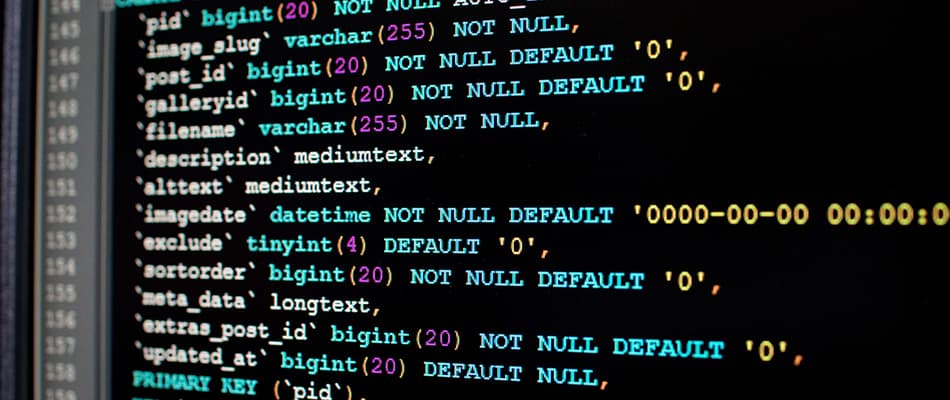What is Front-End Development?- Exploring Roles, Skills, and Career Opportunities!
Front-end development is the process of building the visual and interactive parts of websites and applications. It focuses on what users see and interact with, including layout, design, and functionality. With the rapid growth of the internet and mobile apps, front-end development is in high demand.
As digital experiences become a central part of daily life, businesses across all sectors are focusing on creating engaging and user-friendly websites and apps. This has made front-end development an essential component of modern web design, ensuring that content is presented in a clear and visually appealing way.
Read the article to learn what is front-end development in detail, the responsibilities of front-end developers, core technologies used in front-end development and more.
What is Front-End Development?
Front-end development focuses on creating the parts of a website or application that users see and interact with. It involves designing layouts, styling pages, and adding interactive features to ensure a smooth user experience. Developers use coding languages and tools to build visually appealing and functional interfaces.
Front-end developers create responsive designs that work on all devices, including mobile phones, tablets, and desktops. They also optimise performance, ensure fast load times, and test for usability. By combining creativity and technical skills, front-end developers bring ideas to life, making websites functional, engaging, and user-friendly.
Get insights into what is full stack developer here
What are the Responsibilities of Front-End Developers?
After understanding what is front-end development, let us know the roles and responsibilities of a front-end developer. Front-end developers are essential in managing the user experience of websites and applications. They focus on creating visually appealing, functional, and responsive designs that engage users. Let us know the responsibilities of a front-end developer below:
- Design user-friendly websites and applications.
- Ensure websites are responsive across devices.
- Implement the visual elements of a site.
- Write clean, maintainable HTML, CSS, and JavaScript.
- Optimise website performance and load times.
- Collaborate with back-end developers.
- Test websites for usability and bugs.
- Maintain consistent design and branding.
- Ensure cross-browser compatibility.
- Update and improve website features regularly.
Core Technologies Used in Front-End Development
Once you understand what is front-end development, you will know the technologies they use in their work. Front-end development relies on various tools and technologies. The tools are used to design layouts and add interactivity to websites. These technologies ensure responsive and dynamic user experiences on various devices. Learn more about these technologies below:
- HTML: This is a markup language used to structure the content on the web, including text, images, and links.
- CSS: A style sheet language used to define the presentation of web pages, including layout, colours, and fonts.
- JavaScript: A programming language used to create interactive and dynamic website content, such as animations and form validations.
- React: A JavaScript library for building user interfaces, especially single-page applications with reusable components.
- Angular: A web application framework developed by Google, used for building dynamic, single-page applications with a focus on performance and scalability.
- Vue.js: A progressive JavaScript framework used for building interactive user interfaces and single-page applications.
- Sass: A CSS preprocessor that extends CSS with features like variables, nested rules, and mixins to make code more maintainable and flexible.
- Bootstrap: A front-end framework that provides pre-designed templates and components for building responsive and mobile-first web pages.
- jQuery: A fast, small, and feature-rich JavaScript library that simplifies things like HTML document traversal, event handling, and animations.
- TypeScript: A superset of JavaScript that adds static types, making it easier to catch errors early and improve code quality.
Know is web development hard here
Front End Development vs. Back-End Development
Understanding ‘what is front end development’ and the difference between front-end and back-end development is crucial for effective collaboration in web projects. It helps developers focus on their specific roles while ensuring smooth integration between user interfaces and server operations. This knowledge also helps in choosing the right career path or skill set based on individual interests and strengths.
|
Aspect |
Front-End development |
Back-End development |
|
Focus |
Front-end development deals with the user interface and experience. |
Back-end development focuses on server-side logic, databases, and application functionality. |
|
Languages |
Front-end developers use languages like HTML, CSS, and JavaScript. |
Back-end developers work with languages like Python, Java, Ruby, and PHP. |
|
Tools |
Front-end developers use frameworks and libraries like React, Angular, or Vue.js. |
Back-end developers use tools like Node.js, Express, or Django. |
|
Responsibility |
Front-end developers ensure that websites are visually appealing and user-friendly. |
Back-end developers handle data storage, security, and server management. |
|
Interaction |
Front-end development interacts directly with the user. |
Back-end development works in the background, processing data and ensuring smooth functionality. |
Skills Required for Front-End Development
Understanding what is front-end development will help you easily grasp the skills required for it. The right skills are essential for creating functional and visually appealing websites.
These skills ensure the website is user-friendly, responsive, and performs well among different devices and browsers. Without these skills, building engaging interfaces or solving issues that arise during development would be difficult. Let us know about these skills below:
- CSS Preprocessors (SASS/LESS): Knowledge of CSS preprocessors like SASS or LESS helps enhance CSS maintainability and organisation.
- Version Control/Git: Proficiency in using Git for code collaboration, tracking changes, and maintaining codebase integrity.
- Front-End Frameworks: Depending on the specific role, experience with front-end frameworks and libraries like React, Angular, or Vue.js is often necessary.
- Web Performance Optimisation: Ability to optimise web page loading times, minimise HTTP requests, and reduce resource sizes for better performance.
- Cross-Browser Compatibility: Ensuring web applications work consistently across different browsers and platforms while addressing compatibility issues.
- Accessibility (A11y): Knowledge of web accessibility standards (like WCAG) to make content valuable to people with disabilities.
- Testing and Debugging: Proficiency in using browser developer tools to debug JavaScript, CSS, and HTML issues and conduct testing for functionality and usability.
- Build Tools and Task Runners: Familiarity with build tools like Webpack, Gulp, or Grunt for automating tasks, optimising assets, and managing dependencies.
- API Integration: Ability to integrate APIs to fetch and display data from external sources on web applications.
- UI/UX Principles: Understanding UI/UX principles for collaborating with designers and ensuring a user-friendly interface.
- Problem-Solving: Strong problem-solving skills for troubleshooting and finding solutions in dynamic web development projects.
Career Opportunities in Front-End Development
After understanding what is front-end development, you can consider a career in this field. There are several career opportunities in front-end development. Some important roles you can apply for are front-end developer, UI/UX developer, web designer, etc. These professionals are responsible for creating visually engaging, functional websites and apps. Learn more about these professionals below:
- Front-End Developer: A Front-End Developer builds the visual elements of websites and applications. They focus on ensuring the design is user-friendly and responsive across devices.
- UI/UX Designer: UI/UX Designers focus on creating intuitive and visually appealing user interfaces. They work to enhance the overall user experience by researching and testing designs.
- Web Designer: Web Designers are responsible for the layout and aesthetic of websites. They use design software to create visually engaging pages that align with user needs and brand guidelines.
- JavaScript Developer: JavaScript Developers specialise in writing interactive and dynamic code for websites. They bring life to web pages through animations, complex functionalities, and real-time updates.
- Front-End Engineer: A Front-End Engineer focuses on the technical aspects of front-end development. They use programming languages and frameworks to build scalable and efficient web applications.
- Full-Stack Developer: Full-Stack Developers are proficient in both front-end and back-end development. They handle the entire process of web development, from user interface to server-side logic.
Know how to Become a full-stack developer in South Africa here
How to Learn Front-End Development?
After knowing what is front-end development, you can explore several ways to build your expertise in this field. Front-end development plays an important role in creating engaging and interactive websites. Let us know several ways on how to learn front-end development below:
- Courses and Certifications: Enrol in a structured course to gain hands-on training in essential front-end skills and tools. You can enrol in Digital Regenesys’s Full Stack Web and Software Development Course to upscale your front-end development skills. The course provides practical training in HTML, CSS, JavaScript, and modern frameworks. You will gain hands-on experience in creating responsive and dynamic websites.
- Online Resources: Use online tutorials and coding platforms to improve your learning. These resources are excellent for practising and staying updated with the latest technologies.
- Practice Projects: Build small projects to apply your skills in real-world scenarios. Focus on creating user-friendly websites or app interfaces. A strong portfolio will showcase your expertise to potential employers.
Future of Front-End Development
The future of front-end development is focused on creating faster, more interactive websites with advanced technologies. New tools and frameworks will continue simplifying development processes and improving user experience. Front-end developers will need to stay updated on trends like mobile-first design and the growing use of AI in web development.
- Emerging Trends: Innovations like Progressive Web Apps (PWAs) and Single-Page Applications (SPAs) are influencing the future of front-end development. These technologies offer faster, more seamless user experiences and are increasingly popular among businesses. Responsive design also remains crucial for creating adaptable websites across devices.
- Continued Learning: Front-end development requires staying updated with evolving frameworks and libraries. Developers need to learn best practices and new tools to remain competitive in the field. Continuous skill improvement ensures they can meet the demands of modern web development.
In conclusion, understanding what is front-end development is essential for creating user-friendly websites and applications. It involves using various technologies like HTML, CSS, and JavaScript to build responsive interfaces that enhance user experience. To learn front-end development, you can pursue structured learning through courses like Digital Regenesys’s Full Stack Web and Software Development Course. This offers hands-on training in key front-end technologies. With continuous learning and practice, you can stay updated with the latest trends and build a successful career in this growing field of web development.
FAQs on What is Front-End Development?
What is front-end development?
Front-end development is the process of creating the visual and interactive parts of websites and applications.
What is the difference between front-end and back-end development?
Front-end development focuses on the user interface, while back-end development deals with server-side logic and databases.
What is front-end web development?
Front-end web development involves building and maintaining the visual and interactive aspects of a website or web application that users directly interact with.
What is a full-stack front-end developer?
A full-stack front-end developer works on both the client-side (front-end) and server-side (back-end) of web applications, handling everything from design to database management.
How can I learn front-end development?
You can learn front-end development through online courses, tutorials, practice projects, and enrolling in structured programs like Digital Regenesys’s Full Stack Development Course.
What is a front-end web developer?
A front-end web developer focuses on creating the user interface and experience of websites, using languages like HTML, CSS, and JavaScript to build interactive elements.
Recommended Posts













